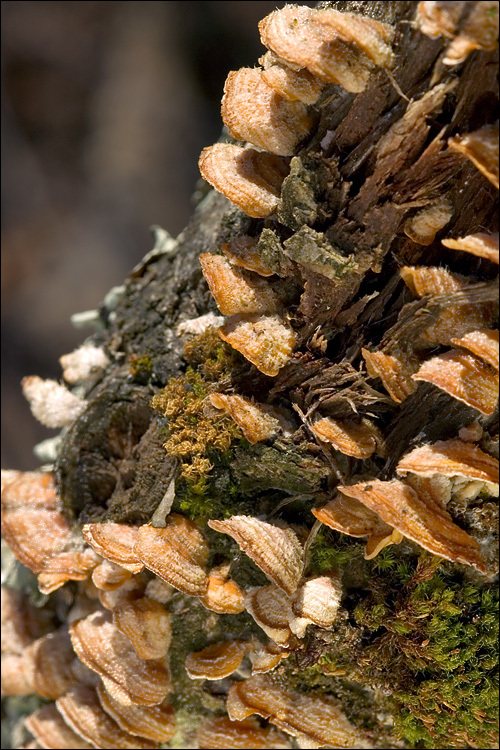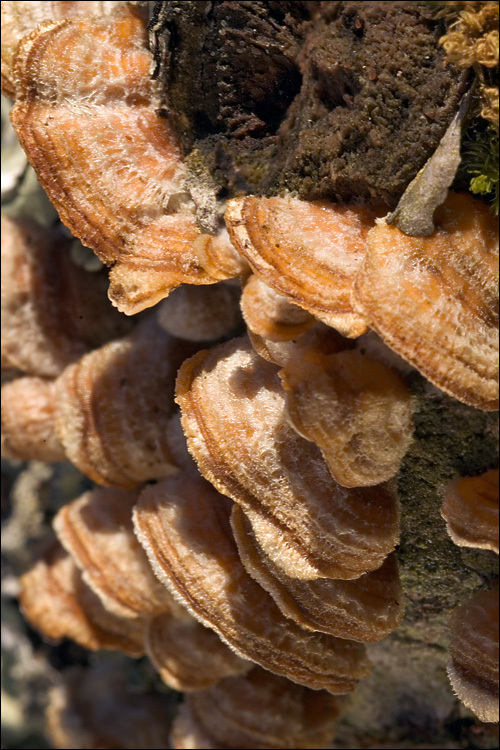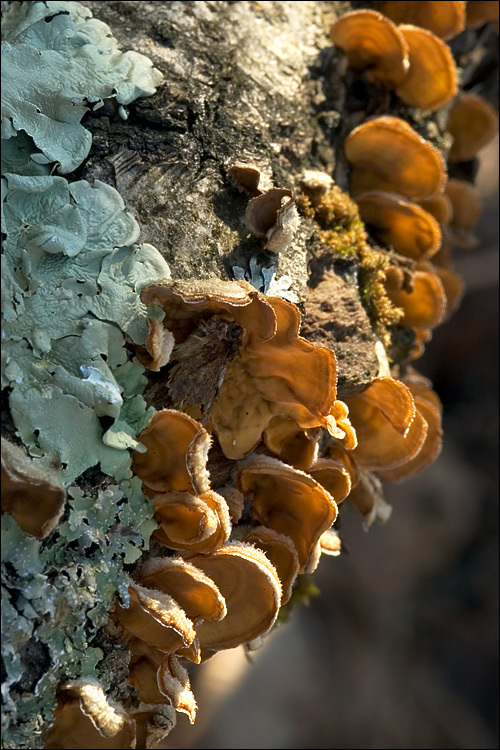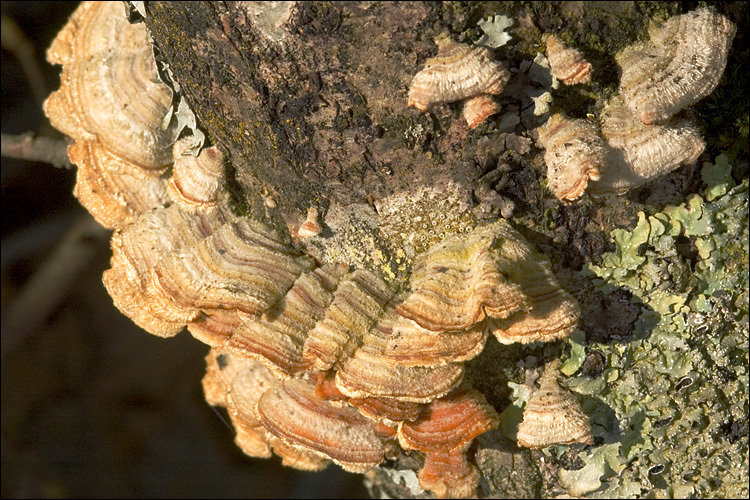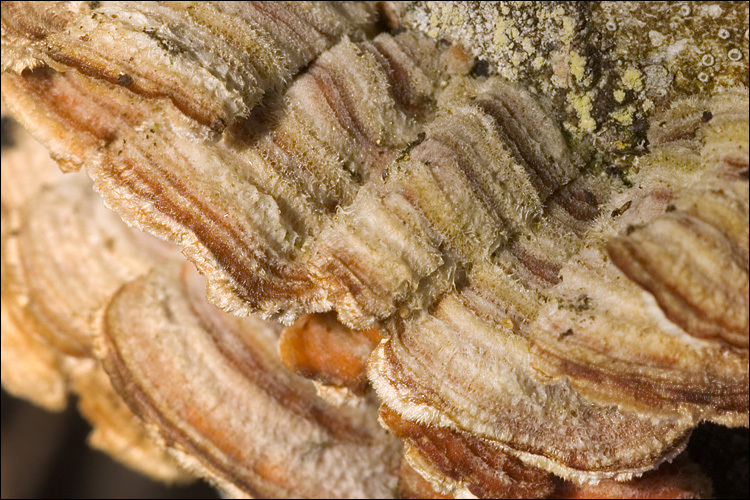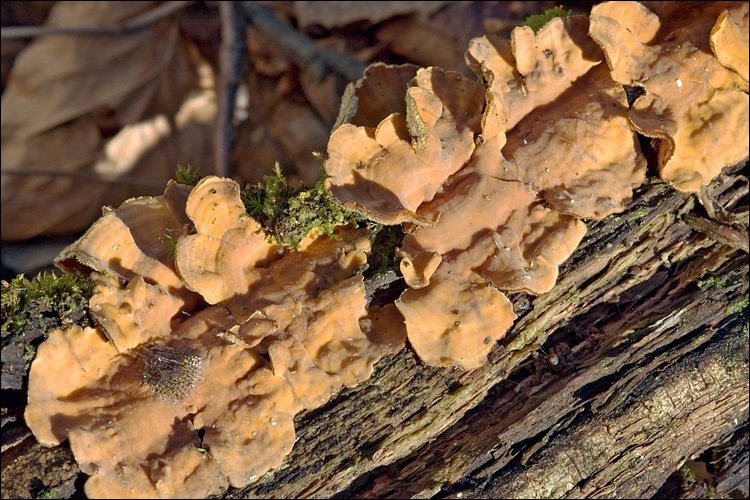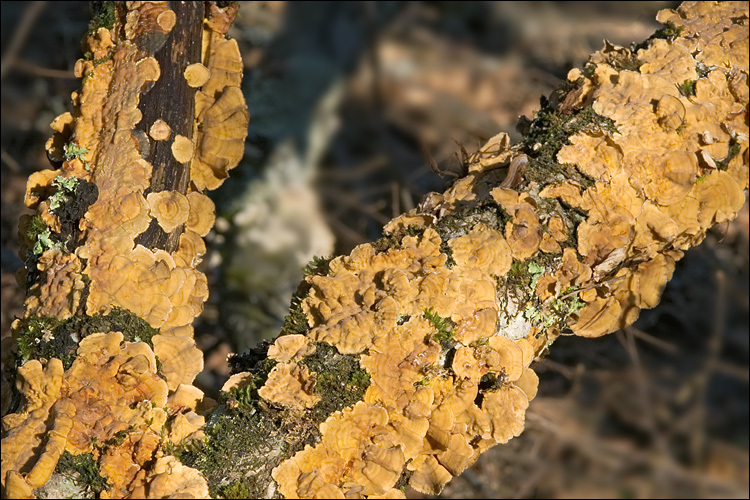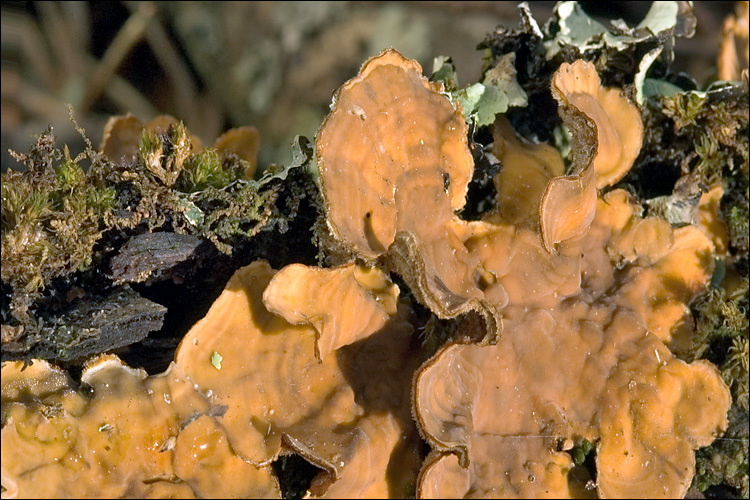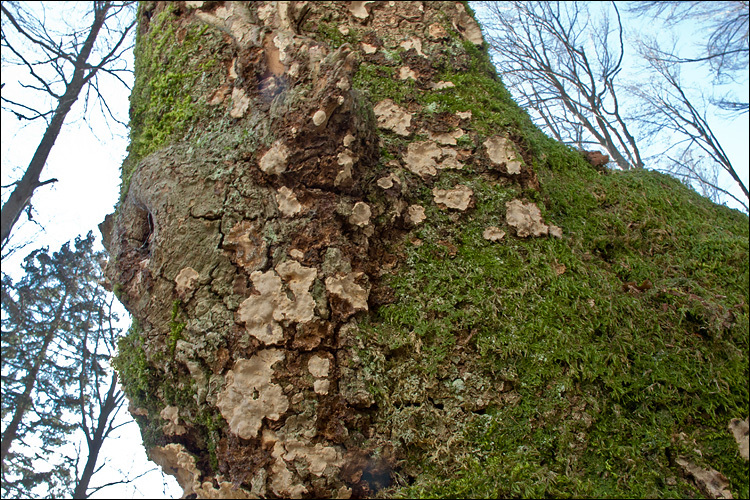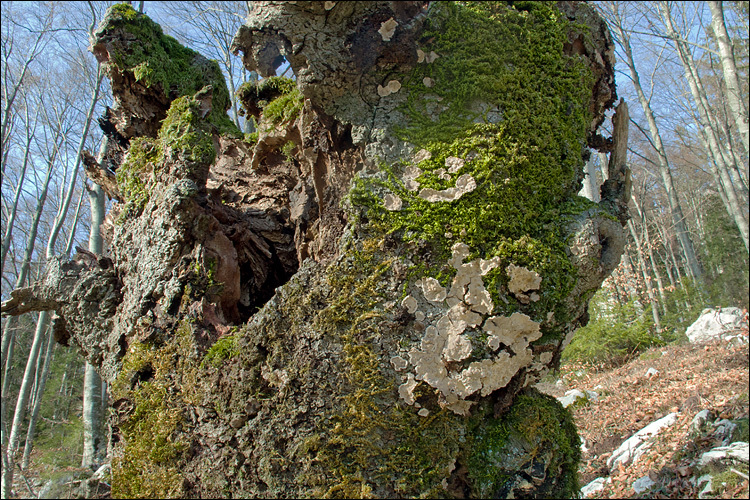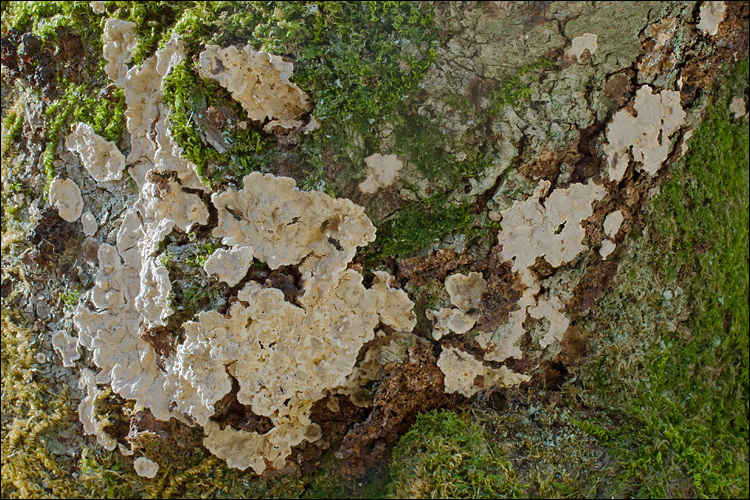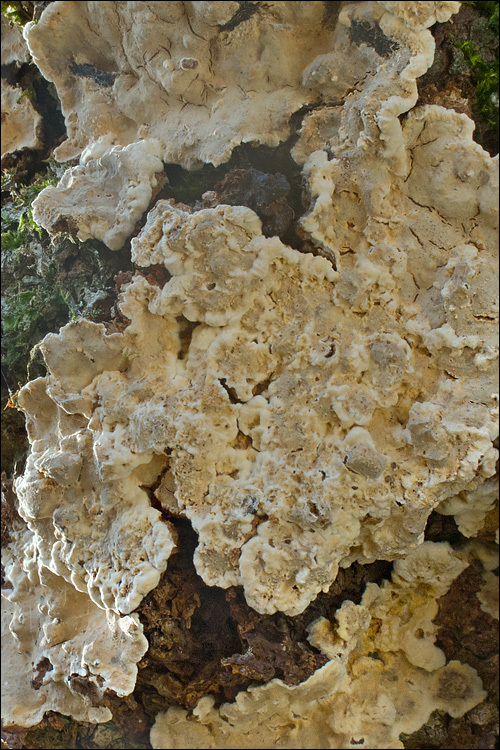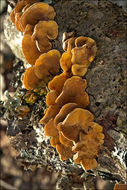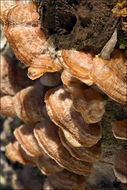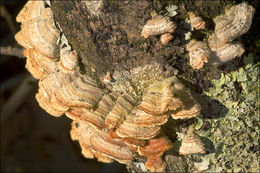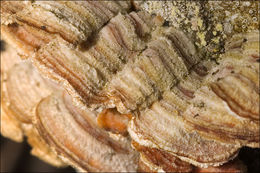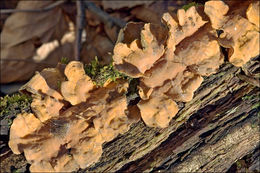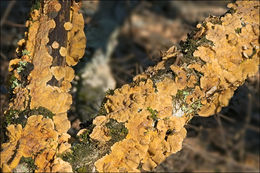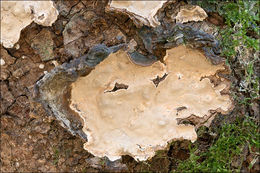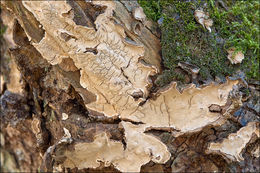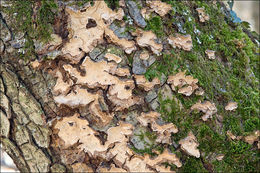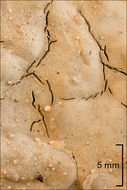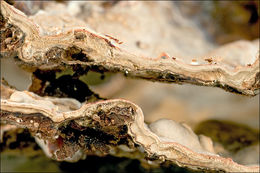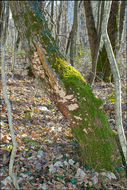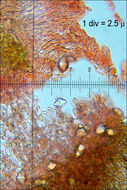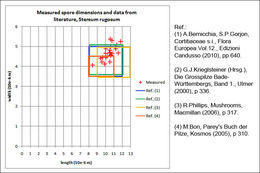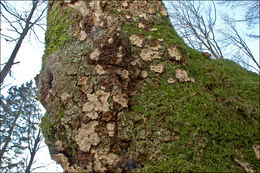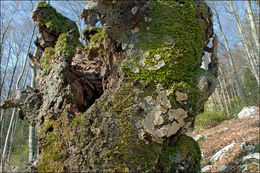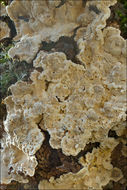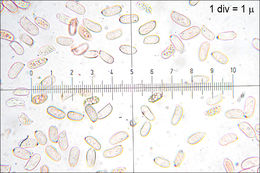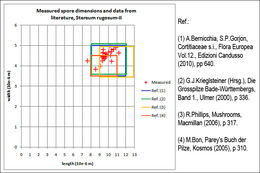-
Slo.: dlakava slojevka - Habitat: Mixed hardwood woodland, cretaceous clastic rock, shade, altitude 440 m (1.400 feet), medium light, rain protected by trees canopies, precipitations ~3.000 mm/year, average temperature 8-10 deg C, alpine phytogeographical region. Substratum: Quercus sp. bark of branches of a fallen tree, partly decayed
-
Slo.: dlakava slojevka - Habitat: Mixed hardwood woodland, cretaceous clastic rock, shade, altitude 440 m (1.400 feet), medium light, rain protected by trees canopies, precipitations ~3.000 mm/year, average temperature 8-10 deg C, alpine phytogeographical region. Substratum: Quercus sp. bark of branches of a fallen tree, partly decayed
-
Slo.: dlakava slojevka - Habitat: Mixed hardwood woodland, cretaceous clastic rock, shade, altitude 440 m (1.400 feet), medium light, rain protected by trees canopies, precipitations ~3.000 mm/year, average temperature 8-10 deg C, alpine phytogeographical region. Substratum: Quercus sp. bark of branches of a fallen tree, partly decayed
-
Slo.: dlakava slojevka - Habitat: Mixed hardwood woodland, cretaceous clastic rock, shade, altitude 440 m (1.400 feet), medium light, rain protected by trees canopies, precipitations ~3.000 mm/year, average temperature 8-10 deg C, alpine phytogeographical region. Substratum: Quercus sp. bark of branches of a fallen tree, partly decayed
-
Slo.: dlakava slojevka - Habitat: Mixed hardwood woodland, cretaceous clastic rock, shade, altitude 440 m (1.400 feet), medium light, rain protected by trees canopies, precipitations ~3.000 mm/year, average temperature 8-10 deg C, alpine phytogeographical region. Substratum: Quercus sp. bark of branches of a fallen tree, partly decayed
-
Slo.: dlakava slojevka - Habitat: Mixed hardwood woodland, cretaceous clastic rock, shade, altitude 440 m (1.400 feet), medium light, rain protected by trees canopies, precipitations ~3.000 mm/year, average temperature 8-10 deg C, alpine phytogeographical region. Substratum: Quercus sp. bark of branches of a fallen tree, partly decayed
-
Slo.: dlakava slojevka - Habitat: Mixed hardwood woodland, cretaceous clastic rock, shade, altitude 440 m (1.400 feet), medium light, rain protected by trees canopies, precipitations ~3.000 mm/year, average temperature 8-10 deg C, alpine phytogeographical region. Substratum: Quercus sp. bark of branches of a fallen tree, partly decayed
-
Slo.: dlakava slojevka - Habitat: Mixed hardwood woodland, cretaceous clastic rock, shade, altitude 440 m (1.400 feet), medium light, rain protected by trees canopies, precipitations ~3.000 mm/year, average temperature 8-10 deg C, alpine phytogeographical region. Substratum: Quercus sp. bark of branches of a fallen tree, partly decayed
-
Slo.: dlakava slojevka - Habitat: Mixed hardwood woodland, cretaceous clastic rock, shade, altitude 440 m (1.400 feet), medium light, rain protected by trees canopies, precipitations ~3.000 mm/year, average temperature 8-10 deg C, alpine phytogeographical region. Substratum: Quercus sp. bark of branches of a fallen tree, partly decayed
-
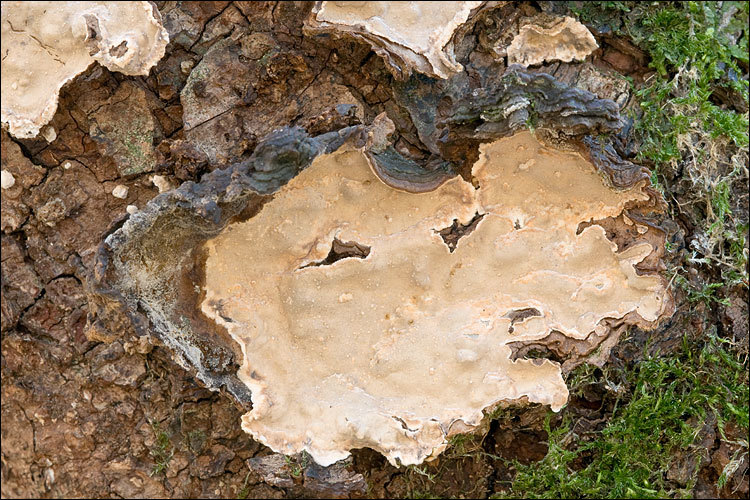
Slo.: grbančasta slojevka - Habitat: Secondary mixed forest, deciduous trees dominant, nearly flat terrain, cretaceous clastic rock (flysh) bedrock, in shade, partly protected from direct rain by tree canopies, average precipitations ~ 3.000 mm/year, average temperature 8-10 deg C, elevations 460 m (1.500 feet), alpine phytogeographical region. - Substratum: dead but still standing and not yet debarked Alnus incana. - Comments: Growing on mossy bark of a tree. Photographed in almost dry state. Hymenium dull ocher-orange (oac757), at the thin margins almost white; mostly resupinate, rarely somewhat effused-reflexed, small huts blakish-brouwn; SP abundant, crme color (oac857); after keeping it at 100% relative humidity and room temperatures for a few days it started bruising reddish when handled and secreting blood-red milk when scratcher with a needle or knife. - Spores smooth, dimensions: 10.4 (SD = 0.7) x 4.7 (SD = 0.4) micr., Q = 2.21 (SD = 0.24), n = 30. Motic B2-211A, magnification 1.000 x, oil, in water. Ref.: (1) A.Bernicchia, S.P.Gorjon, Cortitiaceae s.i., Flora Europea Vol.12., Edizioni Candusso (2010), pp 640. (2) G.J.Krieglsteiner (Hrsg.), Die Grosspilze Bade-Wrttembergs, Band 1., Ulmer (2000), p 336. (3) R.Phillips, Mushrooms, Macmillan (2006), p 317. (4) M.Bon, Parey's Buch der Pilze, Kosmos (2005), p 310.
-
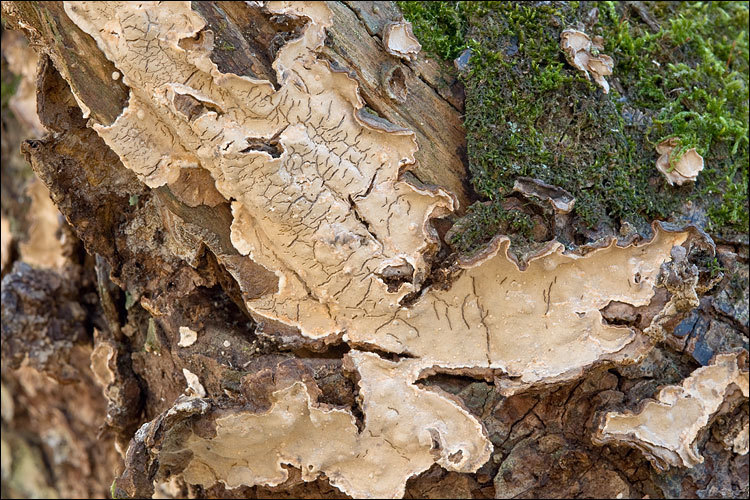
Slo.: grbančasta slojevka - Habitat: Secondary mixed forest, deciduous trees dominant, nearly flat terrain, cretaceous clastic rock (flysh) bedrock, in shade, partly protected from direct rain by tree canopies, average precipitations ~ 3.000 mm/year, average temperature 8-10 deg C, elevations 460 m (1.500 feet), alpine phytogeographical region. - Substratum: dead but still standing and not yet debarked Alnus incana. - Comments: Growing on mossy bark of a tree. Photographed in almost dry state. Hymenium dull ocher-orange (oac757), at the thin margins almost white; mostly resupinate, rarely somewhat effused-reflexed, small huts blakish-brouwn; SP abundant, crme color (oac857); after keeping it at 100% relative humidity and room temperatures for a few days it started bruising reddish when handled and secreting blood-red milk when scratcher with a needle or knife. - Spores smooth, dimensions: 10.4 (SD = 0.7) x 4.7 (SD = 0.4) micr., Q = 2.21 (SD = 0.24), n = 30. Motic B2-211A, magnification 1.000 x, oil, in water. Ref.: (1) A.Bernicchia, S.P.Gorjon, Cortitiaceae s.i., Flora Europea Vol.12., Edizioni Candusso (2010), pp 640. (2) G.J.Krieglsteiner (Hrsg.), Die Grosspilze Bade-Wrttembergs, Band 1., Ulmer (2000), p 336. (3) R.Phillips, Mushrooms, Macmillan (2006), p 317. (4) M.Bon, Parey's Buch der Pilze, Kosmos (2005), p 310.
-
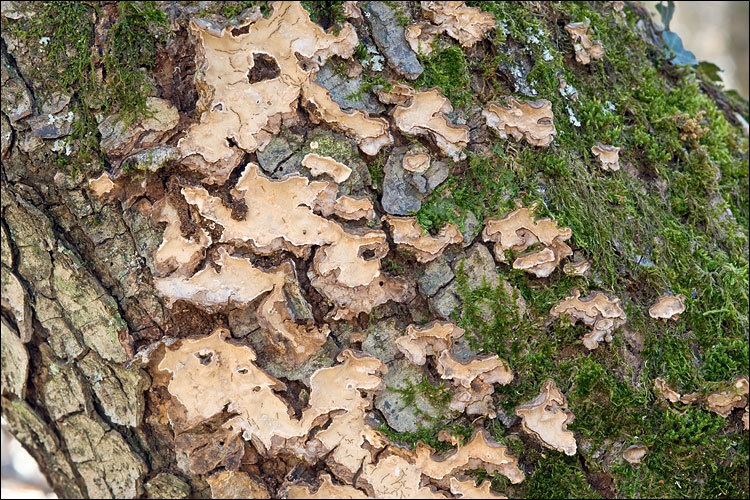
Slo.: grbančasta slojevka - Habitat: Secondary mixed forest, deciduous trees dominant, nearly flat terrain, cretaceous clastic rock (flysh) bedrock, in shade, partly protected from direct rain by tree canopies, average precipitations ~ 3.000 mm/year, average temperature 8-10 deg C, elevations 460 m (1.500 feet), alpine phytogeographical region. - Substratum: dead but still standing and not yet debarked Alnus incana. - Comments: Growing on mossy bark of a tree. Photographed in almost dry state. Hymenium dull ocher-orange (oac757), at the thin margins almost white; mostly resupinate, rarely somewhat effused-reflexed, small huts blakish-brouwn; SP abundant, crme color (oac857); after keeping it at 100% relative humidity and room temperatures for a few days it started bruising reddish when handled and secreting blood-red milk when scratcher with a needle or knife. - Spores smooth, dimensions: 10.4 (SD = 0.7) x 4.7 (SD = 0.4) micr., Q = 2.21 (SD = 0.24), n = 30. Motic B2-211A, magnification 1.000 x, oil, in water. Ref.: (1) A.Bernicchia, S.P.Gorjon, Cortitiaceae s.i., Flora Europea Vol.12., Edizioni Candusso (2010), pp 640. (2) G.J.Krieglsteiner (Hrsg.), Die Grosspilze Bade-Wrttembergs, Band 1., Ulmer (2000), p 336. (3) R.Phillips, Mushrooms, Macmillan (2006), p 317. (4) M.Bon, Parey's Buch der Pilze, Kosmos (2005), p 310.
-
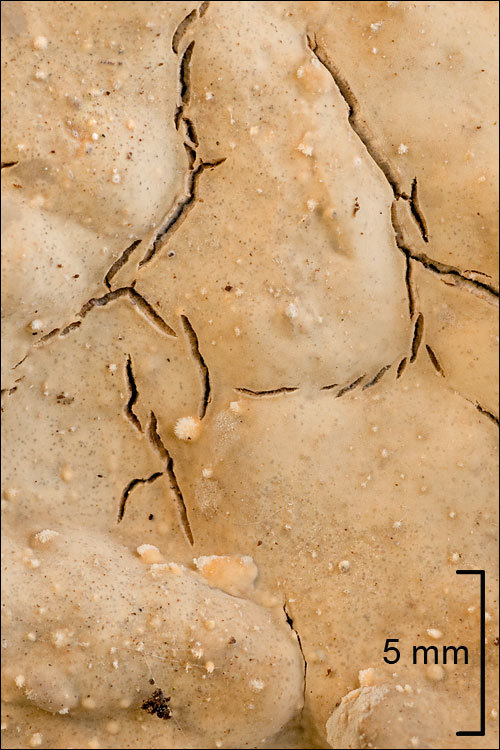
Slo.: grbančasta slojevka - Habitat: Secondary mixed forest, deciduous trees dominant, nearly flat terrain, cretaceous clastic rock (flysh) bedrock, in shade, partly protected from direct rain by tree canopies, average precipitations ~ 3.000 mm/year, average temperature 8-10 deg C, elevations 460 m (1.500 feet), alpine phytogeographical region. - Substratum: dead but still standing and not yet debarked Alnus incana. - Comments: Growing on mossy bark of a tree. Photographed in almost dry state. Hymenium dull ocher-orange (oac757), at the thin margins almost white; mostly resupinate, rarely somewhat effused-reflexed, small huts blakish-brouwn; SP abundant, crme color (oac857); after keeping it at 100% relative humidity and room temperatures for a few days it started bruising reddish when handled and secreting blood-red milk when scratcher with a needle or knife. - Spores smooth, dimensions: 10.4 (SD = 0.7) x 4.7 (SD = 0.4) micr., Q = 2.21 (SD = 0.24), n = 30. Motic B2-211A, magnification 1.000 x, oil, in water. Ref.: (1) A.Bernicchia, S.P.Gorjon, Cortitiaceae s.i., Flora Europea Vol.12., Edizioni Candusso (2010), pp 640. (2) G.J.Krieglsteiner (Hrsg.), Die Grosspilze Bade-Wrttembergs, Band 1., Ulmer (2000), p 336. (3) R.Phillips, Mushrooms, Macmillan (2006), p 317. (4) M.Bon, Parey's Buch der Pilze, Kosmos (2005), p 310.
-

Slo.: grbančasta slojevka - Habitat: Secondary mixed forest, deciduous trees dominant, nearly flat terrain, cretaceous clastic rock (flysh) bedrock, in shade, partly protected from direct rain by tree canopies, average precipitations ~ 3.000 mm/year, average temperature 8-10 deg C, elevations 460 m (1.500 feet), alpine phytogeographical region. - Substratum: dead but still standing and not yet debarked Alnus incana. - Comments: Growing on mossy bark of a tree. Photographed in almost dry state. Hymenium dull ocher-orange (oac757), at the thin margins almost white; mostly resupinate, rarely somewhat effused-reflexed, small huts blakish-brouwn; SP abundant, crme color (oac857); after keeping it at 100% relative humidity and room temperatures for a few days it started bruising reddish when handled and secreting blood-red milk when scratcher with a needle or knife. - Spores smooth, dimensions: 10.4 (SD = 0.7) x 4.7 (SD = 0.4) micr., Q = 2.21 (SD = 0.24), n = 30. Motic B2-211A, magnification 1.000 x, oil, in water. Ref.: (1) A.Bernicchia, S.P.Gorjon, Cortitiaceae s.i., Flora Europea Vol.12., Edizioni Candusso (2010), pp 640. (2) G.J.Krieglsteiner (Hrsg.), Die Grosspilze Bade-Wrttembergs, Band 1., Ulmer (2000), p 336. (3) R.Phillips, Mushrooms, Macmillan (2006), p 317. (4) M.Bon, Parey's Buch der Pilze, Kosmos (2005), p 310.
-
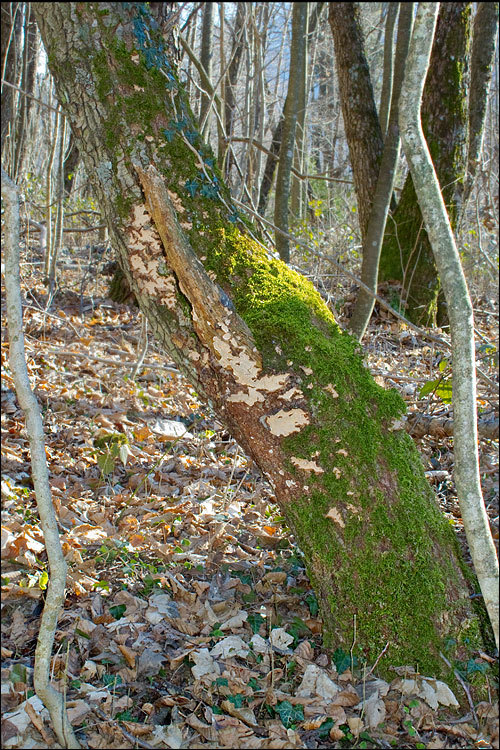
Slo.: grbančasta slojevka - Habitat: Secondary mixed forest, deciduous trees dominant, nearly flat terrain, cretaceous clastic rock (flysh) bedrock, in shade, partly protected from direct rain by tree canopies, average precipitations ~ 3.000 mm/year, average temperature 8-10 deg C, elevations 460 m (1.500 feet), alpine phytogeographical region. - Substratum: dead but still standing and not yet debarked Alnus incana. - Comments: Growing on mossy bark of a tree. Photographed in almost dry state. Hymenium dull ocher-orange (oac757), at the thin margins almost white; mostly resupinate, rarely somewhat effused-reflexed, small huts blakish-brouwn; SP abundant, crme color (oac857); after keeping it at 100% relative humidity and room temperatures for a few days it started bruising reddish when handled and secreting blood-red milk when scratcher with a needle or knife. - Spores smooth, dimensions: 10.4 (SD = 0.7) x 4.7 (SD = 0.4) micr., Q = 2.21 (SD = 0.24), n = 30. Motic B2-211A, magnification 1.000 x, oil, in water. Ref.: (1) A.Bernicchia, S.P.Gorjon, Cortitiaceae s.i., Flora Europea Vol.12., Edizioni Candusso (2010), pp 640. (2) G.J.Krieglsteiner (Hrsg.), Die Grosspilze Bade-Wrttembergs, Band 1., Ulmer (2000), p 336. (3) R.Phillips, Mushrooms, Macmillan (2006), p 317. (4) M.Bon, Parey's Buch der Pilze, Kosmos (2005), p 310.
-

Slo.: grbančasta slojevka - Habitat: Secondary mixed forest, deciduous trees dominant, nearly flat terrain, cretaceous clastic rock (flysh) bedrock, in shade, partly protected from direct rain by tree canopies, average precipitations ~ 3.000 mm/year, average temperature 8-10 deg C, elevations 460 m (1.500 feet), alpine phytogeographical region. - Substratum: dead but still standing and not yet debarked Alnus incana. - Comments: Growing on mossy bark of a tree. Photographed in almost dry state. Hymenium dull ocher-orange (oac757), at the thin margins almost white; mostly resupinate, rarely somewhat effused-reflexed, small huts blakish-brouwn; SP abundant, crme color (oac857); after keeping it at 100% relative humidity and room temperatures for a few days it started bruising reddish when handled and secreting blood-red milk when scratcher with a needle or knife. - Spores smooth, dimensions: 10.4 (SD = 0.7) x 4.7 (SD = 0.4) micr., Q = 2.21 (SD = 0.24), n = 30. Motic B2-211A, magnification 1.000 x, oil, in water. Ref.: (1) A.Bernicchia, S.P.Gorjon, Cortitiaceae s.i., Flora Europea Vol.12., Edizioni Candusso (2010), pp 640. (2) G.J.Krieglsteiner (Hrsg.), Die Grosspilze Bade-Wrttembergs, Band 1., Ulmer (2000), p 336. (3) R.Phillips, Mushrooms, Macmillan (2006), p 317. (4) M.Bon, Parey's Buch der Pilze, Kosmos (2005), p 310.
-
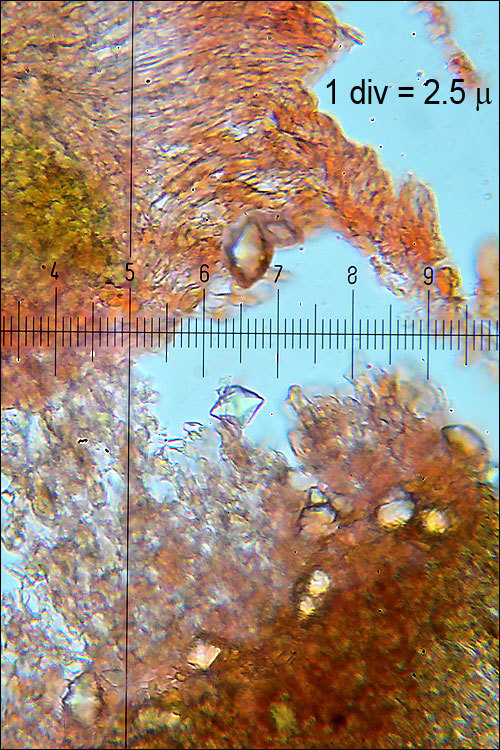
Slo.: grbančasta slojevka - Habitat: Secondary mixed forest, deciduous trees dominant, nearly flat terrain, cretaceous clastic rock (flysh) bedrock, in shade, partly protected from direct rain by tree canopies, average precipitations ~ 3.000 mm/year, average temperature 8-10 deg C, elevations 460 m (1.500 feet), alpine phytogeographical region. - Substratum: dead but still standing and not yet debarked Alnus incana. - Comments: Growing on mossy bark of a tree. Photographed in almost dry state. Hymenium dull ocher-orange (oac757), at the thin margins almost white; mostly resupinate, rarely somewhat effused-reflexed, small huts blakish-brouwn; SP abundant, crme color (oac857); after keeping it at 100% relative humidity and room temperatures for a few days it started bruising reddish when handled and secreting blood-red milk when scratcher with a needle or knife. - Spores smooth, dimensions: 10.4 (SD = 0.7) x 4.7 (SD = 0.4) micr., Q = 2.21 (SD = 0.24), n = 30. Motic B2-211A, magnification 1.000 x, oil, in water. Ref.: (1) A.Bernicchia, S.P.Gorjon, Cortitiaceae s.i., Flora Europea Vol.12., Edizioni Candusso (2010), pp 640. (2) G.J.Krieglsteiner (Hrsg.), Die Grosspilze Bade-Wrttembergs, Band 1., Ulmer (2000), p 336. (3) R.Phillips, Mushrooms, Macmillan (2006), p 317. (4) M.Bon, Parey's Buch der Pilze, Kosmos (2005), p 310.
-
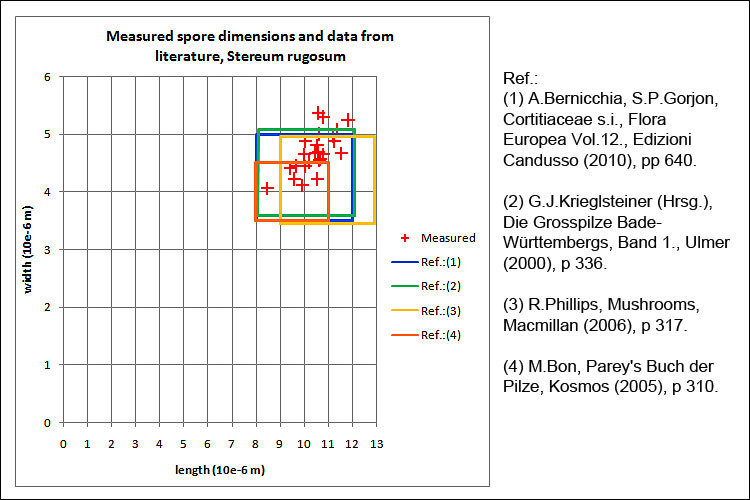
Slo.: grbančasta slojevka - Habitat: Secondary mixed forest, deciduous trees dominant, nearly flat terrain, cretaceous clastic rock (flysh) bedrock, in shade, partly protected from direct rain by tree canopies, average precipitations ~ 3.000 mm/year, average temperature 8-10 deg C, elevations 460 m (1.500 feet), alpine phytogeographical region. - Substratum: dead but still standing and not yet debarked Alnus incana. - Comments: Growing on mossy bark of a tree. Photographed in almost dry state. Hymenium dull ocher-orange (oac757), at the thin margins almost white; mostly resupinate, rarely somewhat effused-reflexed, small huts blakish-brouwn; SP abundant, crme color (oac857); after keeping it at 100% relative humidity and room temperatures for a few days it started bruising reddish when handled and secreting blood-red milk when scratcher with a needle or knife. - Spores smooth, dimensions: 10.4 (SD = 0.7) x 4.7 (SD = 0.4) micr., Q = 2.21 (SD = 0.24), n = 30. Motic B2-211A, magnification 1.000 x, oil, in water. Ref.: (1) A.Bernicchia, S.P.Gorjon, Cortitiaceae s.i., Flora Europea Vol.12., Edizioni Candusso (2010), pp 640. (2) G.J.Krieglsteiner (Hrsg.), Die Grosspilze Bade-Wrttembergs, Band 1., Ulmer (2000), p 336. (3) R.Phillips, Mushrooms, Macmillan (2006), p 317. (4) M.Bon, Parey's Buch der Pilze, Kosmos (2005), p 310.
-
Slo.: grbančasta slojevka - Syn.: Haematostereum rugosum (Pers.) Pouzar (1959) - Habitat: Beach forest with isolated Picea abies, south oriented mountain slope, calcareous ground, partly sunny,, partly protected from direct rain by tree canopies, average precipitations ~ 3.000 mm/year, average temperature 8-10 deg C, elevations 950 m ( 3.100 feet), alpine phytogeographical region. - Substratum: dead stump of large Fagus sylvatica in the final stage of disintegration. - Comments: Growing on mossy disintegrated bark and wood of a tree. Photographed in fairly dry state. No reddish bruising or secreting blood-red milk observed. SP whitish-beige, quite abundant. - Ref.: (1) A.Bernicchia, S.P.Gorjon, Cortitiaceae s.i., Flora Europea Vol.12., Edizioni Candusso (2010), pp 640. (2) G.J.Krieglsteiner (Hrsg.), Die Grosspilze Bade-Wrttembergs, Band 1., Ulmer (2000), p 336. (3) R.Phillips, Mushrooms, Macmillan (2006), p 317. (4) M.Bon, Parey's Buch der Pilze, Kosmos (2005), p 310.
-
Slo.: grbančasta slojevka - Syn.: Haematostereum rugosum (Pers.) Pouzar (1959) - Habitat: Beach forest with isolated Picea abies, south oriented mountain slope, calcareous ground, partly sunny,, partly protected from direct rain by tree canopies, average precipitations ~ 3.000 mm/year, average temperature 8-10 deg C, elevations 950 m ( 3.100 feet), alpine phytogeographical region. - Substratum: dead stump of large Fagus sylvatica in the final stage of disintegration. - Comments: Growing on mossy disintegrated bark and wood of a tree. Photographed in fairly dry state. No reddish bruising or secreting blood-red milk observed. SP whitish-beige, quite abundant. - Ref.: (1) A.Bernicchia, S.P.Gorjon, Cortitiaceae s.i., Flora Europea Vol.12., Edizioni Candusso (2010), pp 640. (2) G.J.Krieglsteiner (Hrsg.), Die Grosspilze Bade-Wrttembergs, Band 1., Ulmer (2000), p 336. (3) R.Phillips, Mushrooms, Macmillan (2006), p 317. (4) M.Bon, Parey's Buch der Pilze, Kosmos (2005), p 310.
-
Slo.: grbančasta slojevka - Syn.: Haematostereum rugosum (Pers.) Pouzar (1959) - Habitat: Beach forest with isolated Picea abies, south oriented mountain slope, calcareous ground, partly sunny,, partly protected from direct rain by tree canopies, average precipitations ~ 3.000 mm/year, average temperature 8-10 deg C, elevations 950 m ( 3.100 feet), alpine phytogeographical region. - Substratum: dead stump of large Fagus sylvatica in the final stage of disintegration. - Comments: Growing on mossy disintegrated bark and wood of a tree. Photographed in fairly dry state. No reddish bruising or secreting blood-red milk observed. SP whitish-beige, quite abundant. - Ref.: (1) A.Bernicchia, S.P.Gorjon, Cortitiaceae s.i., Flora Europea Vol.12., Edizioni Candusso (2010), pp 640. (2) G.J.Krieglsteiner (Hrsg.), Die Grosspilze Bade-Wrttembergs, Band 1., Ulmer (2000), p 336. (3) R.Phillips, Mushrooms, Macmillan (2006), p 317. (4) M.Bon, Parey's Buch der Pilze, Kosmos (2005), p 310.
-
Slo.: grbančasta slojevka - Syn.: Haematostereum rugosum (Pers.) Pouzar (1959) - Habitat: Beach forest with isolated Picea abies, south oriented mountain slope, calcareous ground, partly sunny,, partly protected from direct rain by tree canopies, average precipitations ~ 3.000 mm/year, average temperature 8-10 deg C, elevations 950 m ( 3.100 feet), alpine phytogeographical region. - Substratum: dead stump of large Fagus sylvatica in the final stage of disintegration. - Comments: Growing on mossy disintegrated bark and wood of a tree. Photographed in fairly dry state. No reddish bruising or secreting blood-red milk observed. SP whitish-beige, quite abundant. - Ref.: (1) A.Bernicchia, S.P.Gorjon, Cortitiaceae s.i., Flora Europea Vol.12., Edizioni Candusso (2010), pp 640. (2) G.J.Krieglsteiner (Hrsg.), Die Grosspilze Bade-Wrttembergs, Band 1., Ulmer (2000), p 336. (3) R.Phillips, Mushrooms, Macmillan (2006), p 317. (4) M.Bon, Parey's Buch der Pilze, Kosmos (2005), p 310.
-
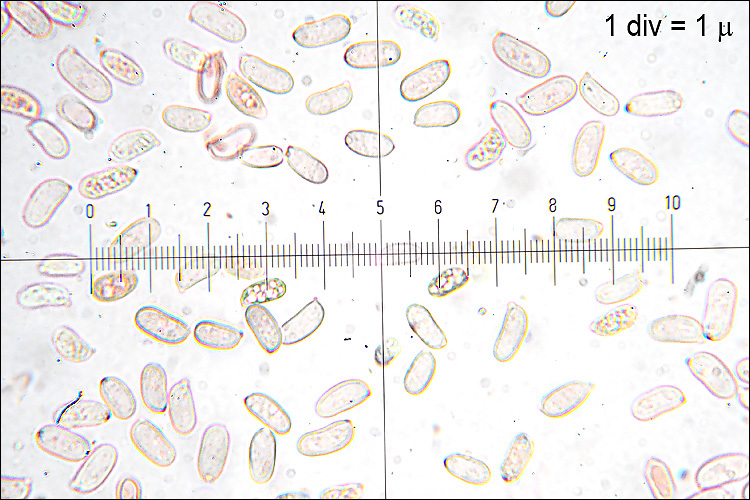
Slo.: grbančasta slojevka - Habitat: Beach forest with isolated Picea abies, south oriented mountain slope, calcareous ground, partly sunny, partly protected from direct rain by tree canopies, average precipitations ~ 3.000 mm/year, average temperature 8-10 deg C, elevations 950 m ( 3.100 feet), alpine phytogeographical region. Substratum: dead stump of large Fagus sylvatica in the final stage of disintegration. - Comments: Growing on mossy disintegrated bark and wood of a tree. Photographed in fairly dry state. No reddish bruising or secreting blood-red milk observed. SP whitish-beige, quite abundant. Spores smooth, dimensions: 9.8 (SD = 0.8) x 4.5 (SD = 0.3.4) micr., Q = 2.42 (SD = 0.24), n = 30. Motic B2-211A, magnification 1.000 x, oil, in water. Congo red. - Ref.: (1) A.Bernicchia, S.P.Gorjon, Cortitiaceae s.i., Flora Europea Vol.12., Edizioni Candusso (2010), pp 640. (2) G.J.Krieglsteiner (Hrsg.), Die Grosspilze Bade-Wrttembergs, Band 1., Ulmer (2000), p 336. (3) R.Phillips, Mushrooms, Macmillan (2006), p 317. (4) M.Bon, Parey's Buch der Pilze, Kosmos (2005), p 310.
-
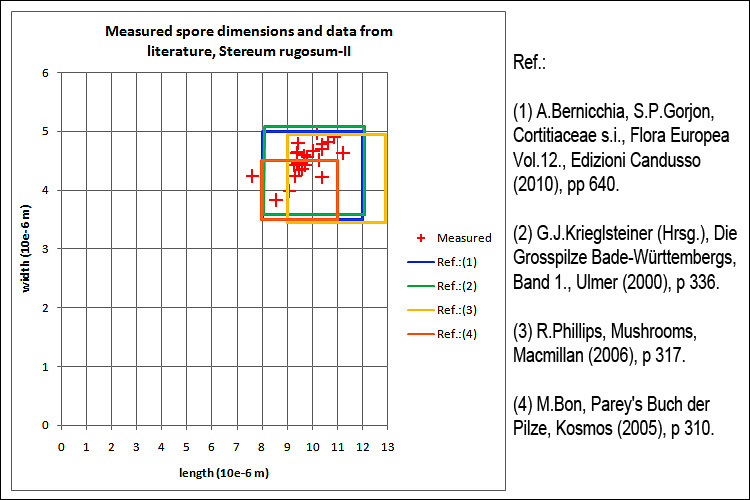
Slo.: grbančasta slojevka - Habitat: Beach forest with isolated Picea abies, south oriented mountain slope, calcareous ground, partly sunny,, partly protected from direct rain by tree canopies, average precipitations ~ 3.000 mm/year, average temperature 8-10 deg C, elevations 950 m ( 3.100 feet), alpine phytogeographical region. Substratum: dead stump of large Fagus sylvatica in the final stage of disintegration. - Comments: Growing on mossy disintegrated bark and wood of a tree. Photographed in fairly dry state. No reddish bruising or secreting blood-red milk observed. SP whitish-beige, quite abundant. Spores smooth, dimensions: 9.8 (SD = 0.8) x 4.5 (SD = 0.3.4) micr., Q = 2.42 (SD = 0.24), n = 30. Motic B2-211A, magnification 1.000 x, oil, in water. Ref.: (1) A.Bernicchia, S.P.Gorjon, Cortitiaceae s.i., Flora Europea Vol.12., Edizioni Candusso (2010), pp 640. (2) G.J.Krieglsteiner (Hrsg.), Die Grosspilze Bade-Wrttembergs, Band 1., Ulmer (2000), p 336. (3) R.Phillips, Mushrooms, Macmillan (2006), p 317. (4) M.Bon, Parey's Buch der Pilze, Kosmos (2005), p 310.



